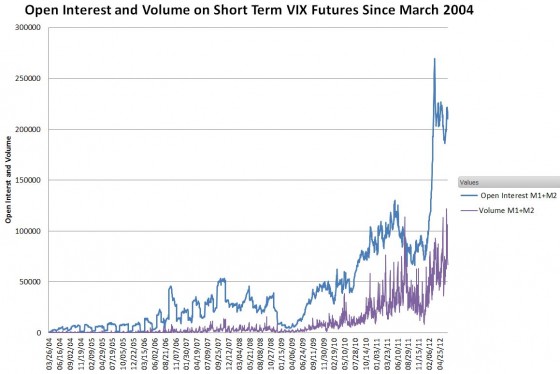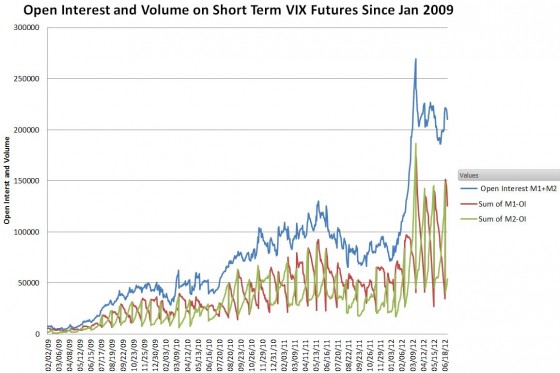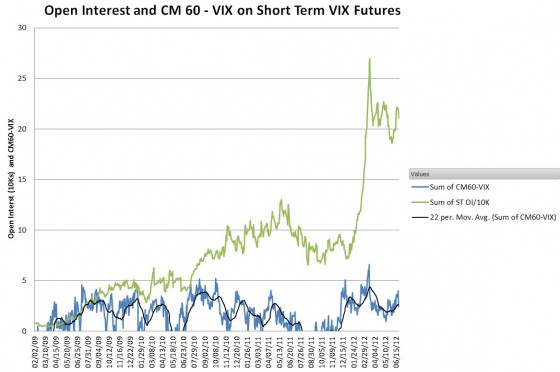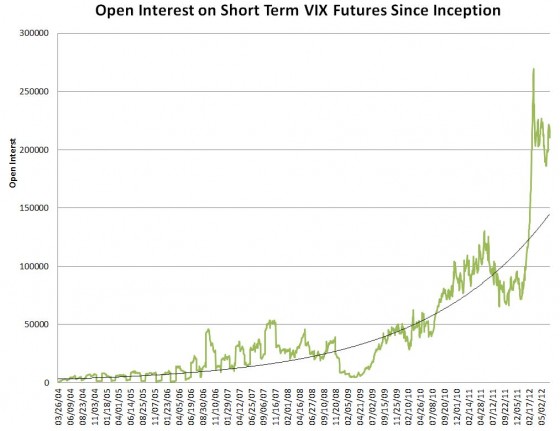Last week the CBOE’s VIX futures set some new volume records. While volume is interesting, I think the real story is the open interest of VIX futures contracts. Is the volume just churn, or are VIX futures contracts being created or eliminated? Since raw volatility is tough to buy, VIX futures market makers must buy other things, like SPX options to hedge the VIX contracts they create—so there is the potential to influence other markets.
The chart below shows the open interest and volume of the combined first and second-month short term VIX futures from their beginnings in 2004.

Open interest has dropped a bit from the record levels in the spring, but it’s still running about double the 2011 levels.
The next chart shows the individual open interest in the first and second-month contracts compared to the sum of the two.

The intertwined saw tooth shapes of the two individual months are the footprints of volatility ETPs like VXX, TVIX, and UVXY that must roll around 5% of their portfolios ($125 million currently) from first month contracts to second month contracts at the end of every day to maintain a constant time horizon on volatility.
With nearest month VIX futures running around $20K approximately 6,000 first month VIX futures need to be sold by the ETP vendors, 15% of the daily volume of around 40,000. The chart below shows the open interest and the difference between the VIX index and a short term constant maturity VIX futures metric that doesn’t have roll costs.

While hitting an all-time highs when the open interest peaked in March 2012, the gap between the VIX and the VIX futures has been in the normal historical ranges after that—the market doesn’t look unduly stressed by the current open interest/volume level.
What stands out to me, looking at the chart below, is the ongoing exponential growth that the short term VIX futures have demonstrated over the last 8 years. If anything their growth is accelerating above their historic 43% annual growth rate.


Click here to leave a comment